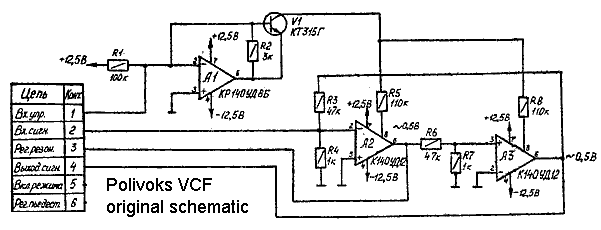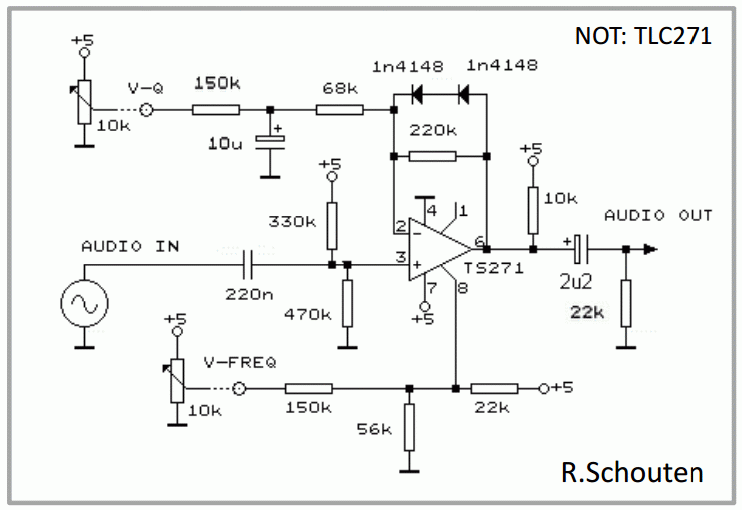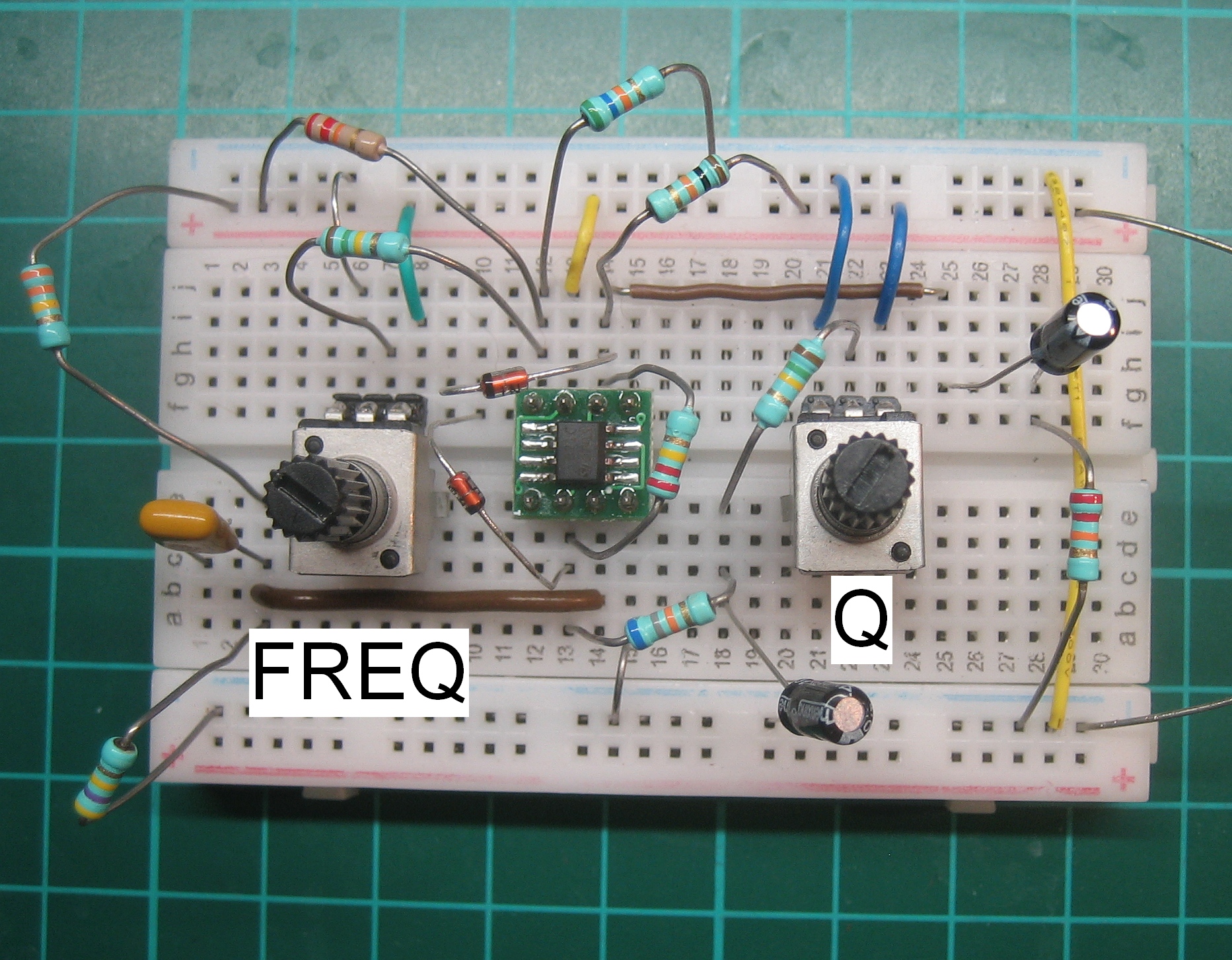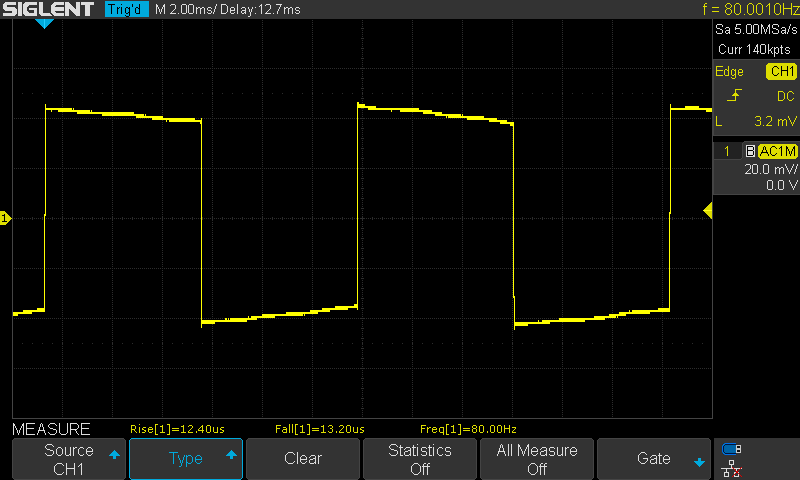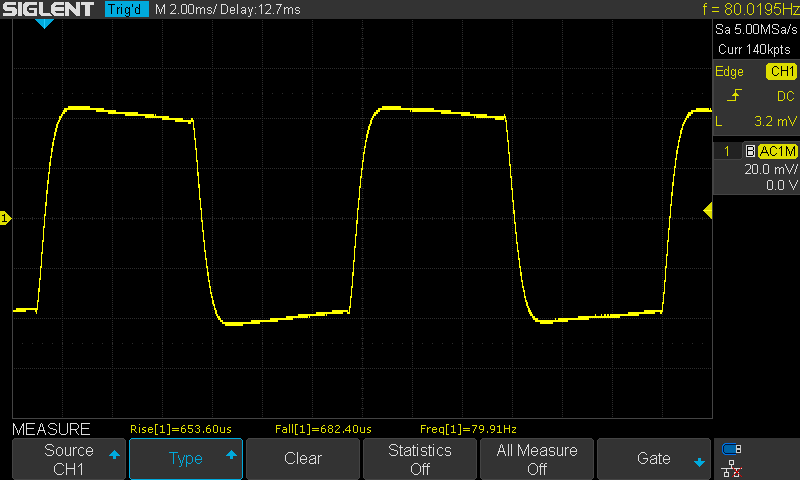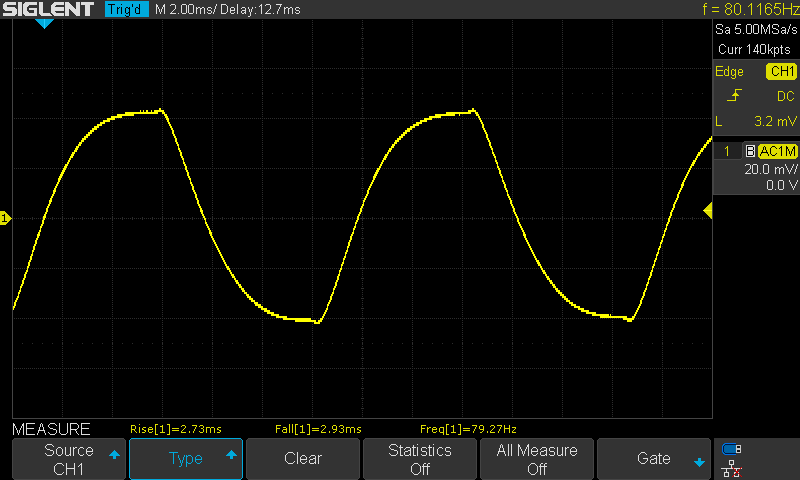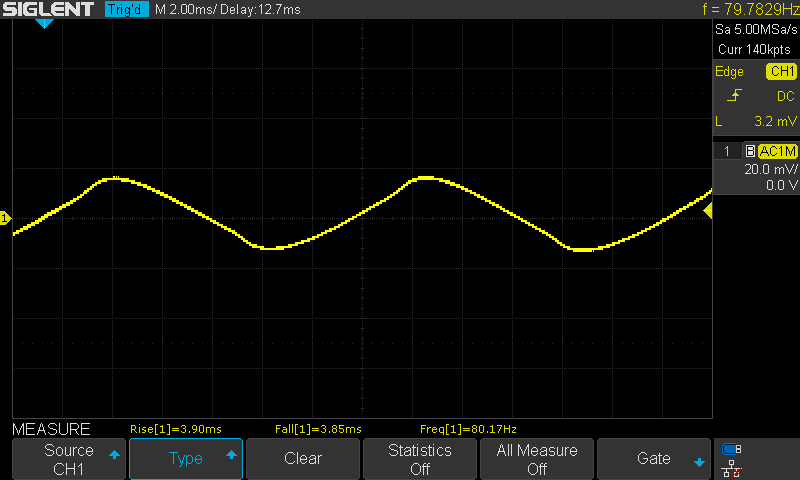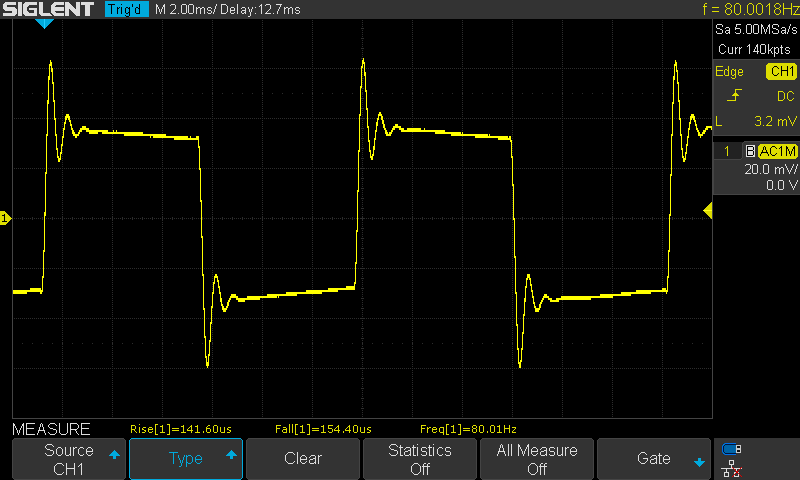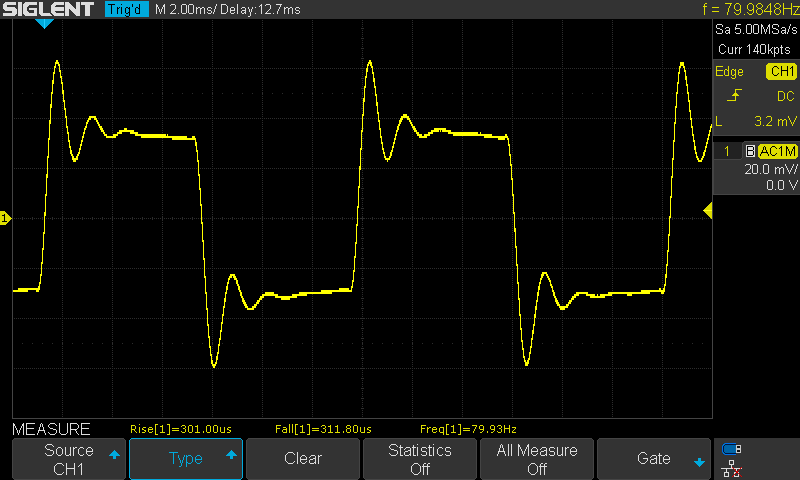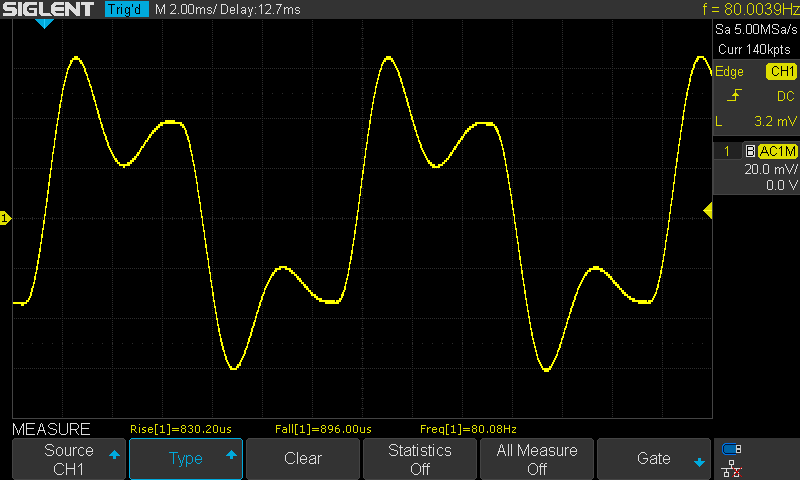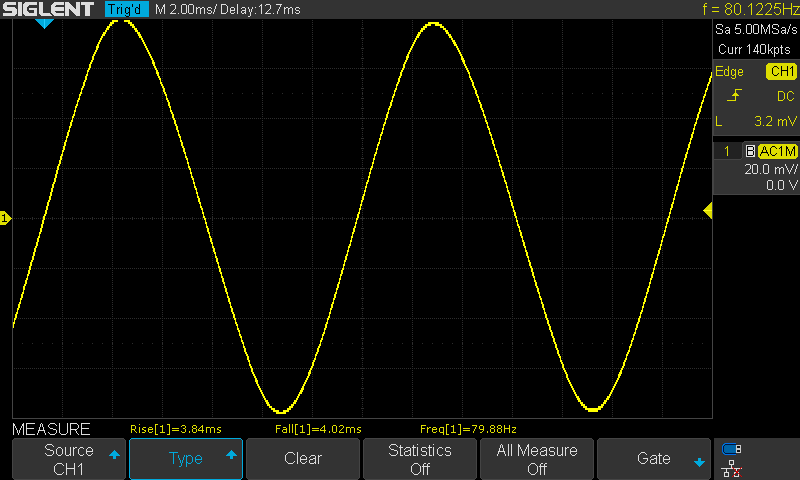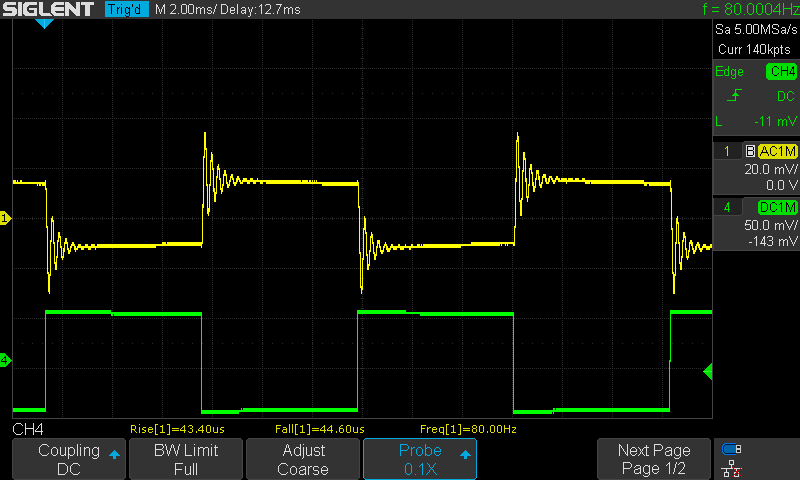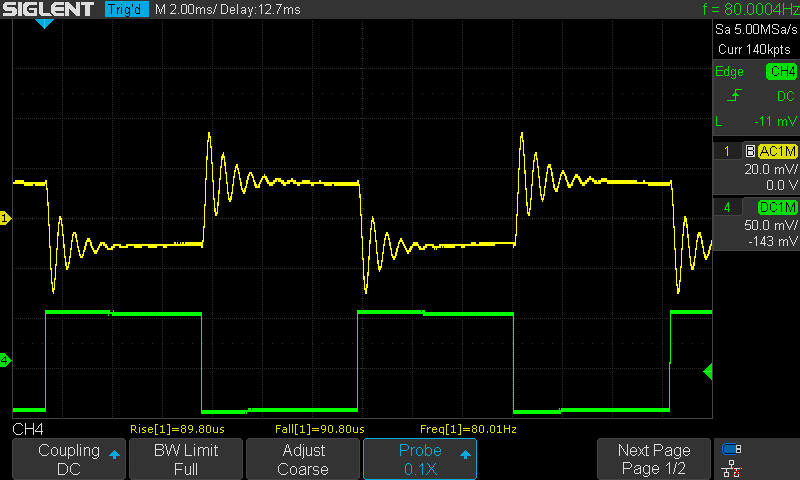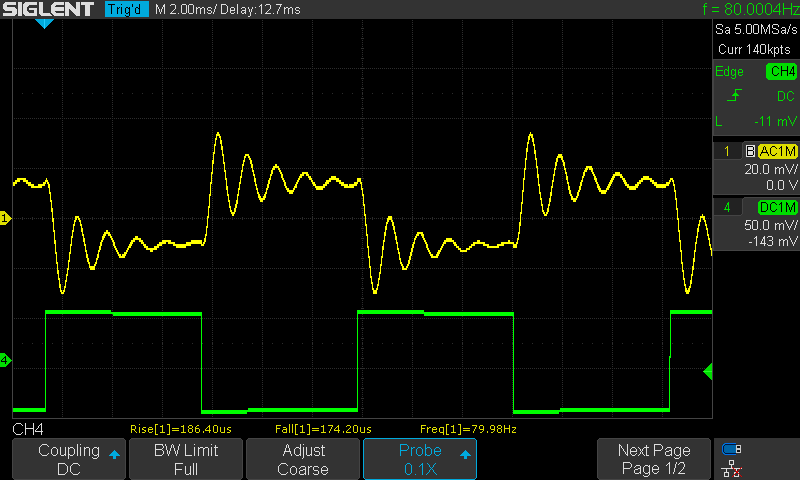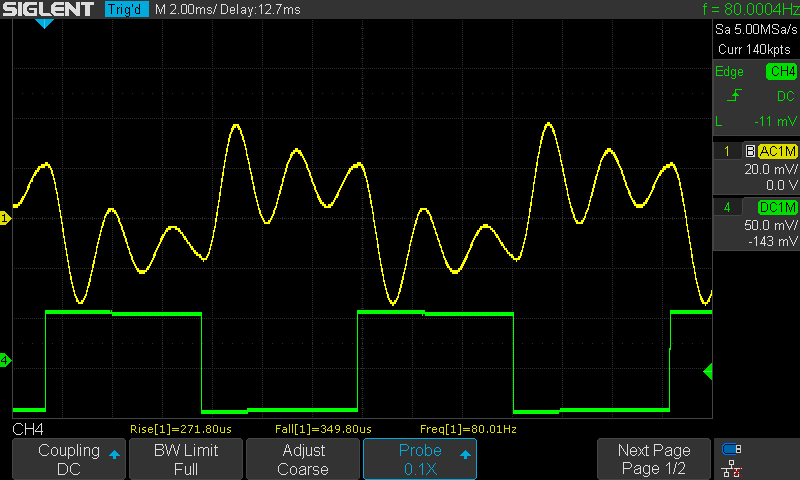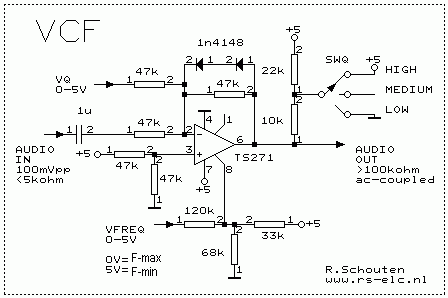Inside part of the opamp:
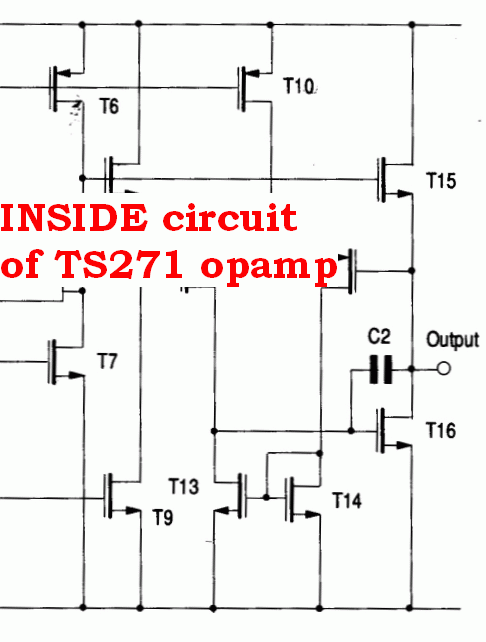
By dc-shifting the output stage and loading it with resistors you can go from a damped filter (T15 doing the work) to a peaking, resonant filter (T16 doing the work). Further higher peaking (higher Q) can be accomplished by lowering the feedback resistance to increase loopgain and thereby degrade damping (see diodes in circuit below).
I did found this behaviour on each TS271 I tested (approx 15) both with DIL (older model) and SOIC housings. Note that I also found that the TLC271 could not be used this way, only the TS271 can be used.
